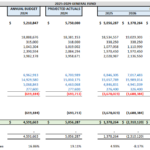
This Week, Port Package Postcards, Highline Forum, Emergency Management Advisory Committee Last Week: StART 2023 report from Port of Seattle. Big airport expansion plans. ADU RFI, A few notes on new Communications Director...
City Council, Position #2
Previous Articles

This Week: Environment Committee, Transportation Committee (TIP), City Council Meeting features Animal Code update Last Week: Finance Committee was a do-not-miss committee meeting. Public Safety Committee. A visit from the CM Recruiter. Burien City Council Meeting offered some great tips for us. ...

This Week: Environment Committee, Transportation Committee (TIP), City Council Meeting features Animal Code update Last Week: Finance Committee was a do-not-miss committee meeting. Public Safety Committee. A visit from the CM Recruiter. Burien City Council Meeting offered some great tips for us. ...

This Week: Finance Committee is a do-not-miss committee meeting. Public Safety Committee. A visit from the CM Recruiter. Last week: Lid Lift passes 4-3, and an essay on why you should vote no. Redondo fishing pier budget woes. Economic Development Committee. Municipal Facilities Committee. City Manager listening session. IT listening session (so much listening right?)...

This week: various meetings on airport environment. Last Week? Environment: Water quality permits, Transportation: Barnes Creek! SR-509! Tree canopy! (Why is this in the transpo committee? :D ) 24th Ave mess! CCM discussions on Biennial Budgeting, Tax Lid Lift, City Manager Recruiter. And you can blame me for only -two- of them! :D And coming April 1st? Marina Paid Parking (no fooling)...